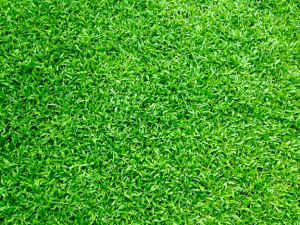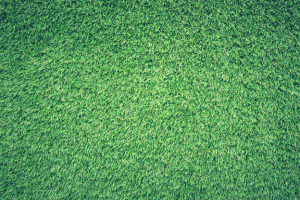Almost anybody desires to have turf at home. The grass is visually appealing and practical, whether it’s a large lawn or a tiny area. It takes a lot of labor to establish and maintain a beautiful lawn. A lot of homes have moved to artificial grass in recent years. Do you think you should follow their example?
Artificial grass installation is a significant financial commitment that will pay you dividends for several years as a long-term asset for your property.
You can use this guide to determine whether artificial grass is good for you and your loved ones. You’ll discover how to utilize artificial grass throughout your home as you peruse. You can find answers to frequently asked questions and the ones you never even knew to ask here.
Equipped with the necessary knowledge (and most likely some fantastic suggestions for your home and garden), you can decide, in a family-friendly manner, whether artificial grass is the right option.
What is Artificial Grass?
Artificial grass is an excellent replacement for natural grass, made to resemble actual turf in look and texture. It is a mixture of synthetic fibers painstakingly designed to resemble natural grass blades in texture, color, and durability. These fibers are usually created from materials like nylon, polyethylene, or polypropylene. The finished product is laid over an empty base with these fibers bonded to a sturdy support material to create a lush, colorful, year-round green surface.
Improvements in production processes and materials have significantly raised the standard of artificial grass’s appearance and quality. Thanks to realistic textures, a range of green hues, and a padded, soft feel underfoot, it’s almost impossible to tell it apart from natural grass these days.
Benefits of Artificial Grass
Due to several advantages, artificial grass has quickly gained popularity. Below are reasons people choose artificial grass in their homes.
Low Maintenance
Artificial grass is a popular option for homes, businesses, and sports venues because of its many low-maintenance advantages.
One of its significant advantages is that it does not require regular mowing, saving time and effort. Unlike natural grass, artificial grass doesn’t need watering to stay green, resulting in significant water savings, particularly in areas with water restrictions. Additionally, artificial grass doesn’t attract weeds, eliminating the need for weeding or herbicides.
The consistent appearance of artificial grass is another benefit; it remains lush and green year-round regardless of weather conditions or seasonal changes. Its durability and longevity mean it can withstand heavy foot traffic and various environmental factors without extensive upkeep or replacement. Cleaning is simple (you can remove stains and debris effortlessly with a hose or brush).
Furthermore, artificial grass offers a safe, clean surface for pets and children to play on without pesticides or fertilizers. The reduced maintenance costs and environmental benefits make artificial grass a practical and efficient option for maintaining attractive outdoor spaces.
Durability
Artificial grass is perfect for high-traffic places like playgrounds and sports fields since it is resilient and made to tolerate heavy foot activity. It resists wear and tear from weather, UV exposure, and daily use, maintaining its green appearance for many years without needing replacement or extensive upkeep.
Allergy-Friendly
Artificial grass is an excellent option for individuals who suffer from seasonal allergies. Unlike natural grass, synthetic turf does not produce pollen or attract pollen-producing weeds that can trigger allergic reactions. It also provides better drainage, reducing the risk of mold or mildew growth, which can cause respiratory issues.
Additionally, artificial grass eliminates the need for chemical treatments such as pesticides and herbicides, which can irritate sensitive individuals. Artificial grass creates a safer and more comfortable outdoor space by minimizing exposure to common allergens, allowing people with allergies to enjoy the outdoors with fewer concerns.
Choosing the Perfect Artificial Grass
Selecting the perfect artificial grass involves considering several factors, such as blade length, color, texture, infill material, and density. Here’s how to approach each aspect:
Blade Length
Blade length determines the look and feel of artificial grass. Shorter blades, around 20-25 mm, are ideal for sports fields or pet areas due to their durability. Longer blades, around 30-40 mm, provide a lush, natural appearance suitable for lawns and landscaping. Consider your intended use and aesthetic preference when choosing blade length.
Color
Artificial grass comes in numerous shades of green, and some blends include hints of brown to mimic natural grass. Choose a color that complements your surrounding landscape and aligns with your aesthetic preference. Opt for a multi-tone blend for a more realistic look.
Texture
The texture of artificial grass varies depending on the type of fiber used. Polyethylene fibers are soft and comfortable, ideal for lawns and playgrounds. Polypropylene fibers are budget-friendly but less durable, while nylon fibers offer excellent durability and resilience. Choose a texture that suits your needs and desired comfort level.
Infill Material
Infill is a material added to artificial grass to provide stability, cushion, and UV protection. Common infill materials include rubber, sand, and organic materials like cork or coconut husk. Rubber infill offers exceptional cushioning for sports fields, while sand provides weight and stability for landscaping. Consider the intended use and performance of each infill type.
Density
Density is the quantity of grass fibers per square meter. Greater density can withstand increased foot traffic and produce a fuller, more organic appearance. Although lower densities could be more affordable, they might eventually look sparse or flattened.
Consider the particular needs of your area and the purpose for which you plan to employ artificial grass. Ensure a balance in budget, usability, and aesthetics. You should also take into account the manufacturer’s warranty to ensure you receive a high-quality product that will last for years.
Beautifying Your Home with Artificial Grass
Artificial grass offers a low-maintenance way to beautify your home. Its lush, green appearance enhances curb appeal and provides a consistent, attractive look year-round. Caring for artificial grass is simple and time-saving—no mowing, watering, or fertilizing is required.
Cleaning involves quickly rinsing with water or brushing to remove debris. The lack of weeds, pests, and allergens creates a healthier outdoor space for families and pets.
By selecting the right artificial grass based on blade length, color, texture, and infill material, you can enjoy a beautiful, easy-to-maintain lawn that adds value and aesthetic appeal to your home.



Recent Comments